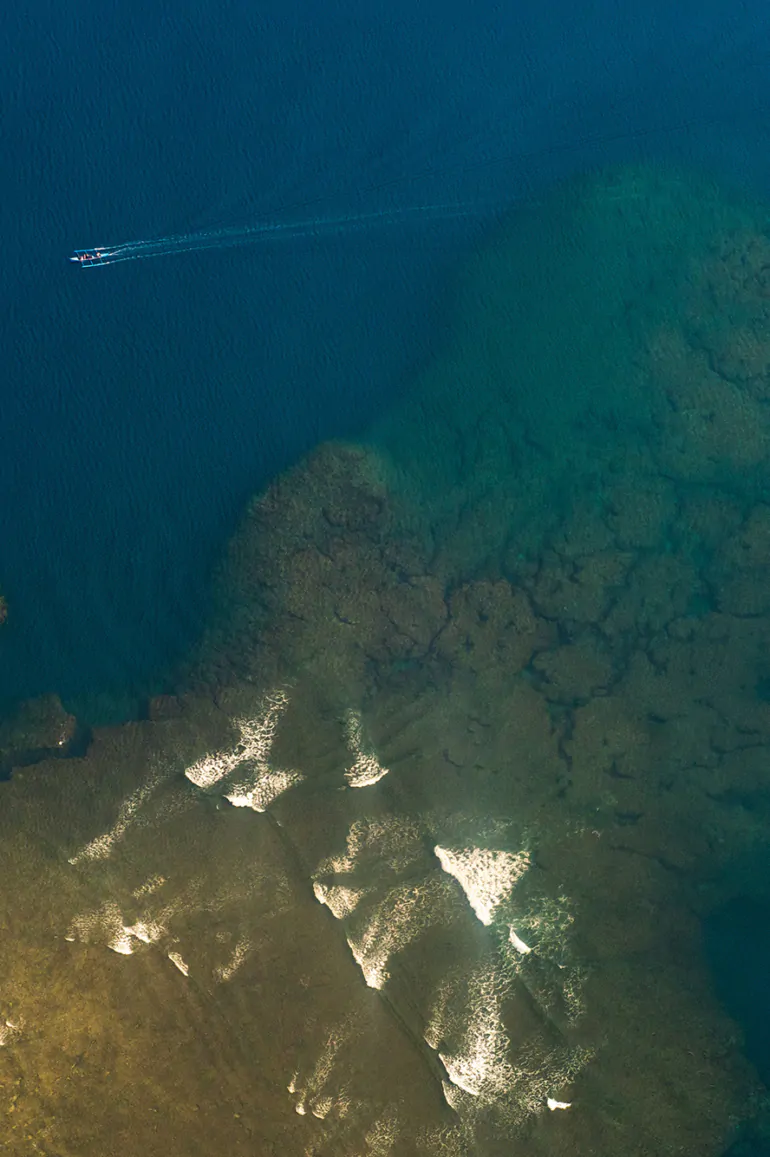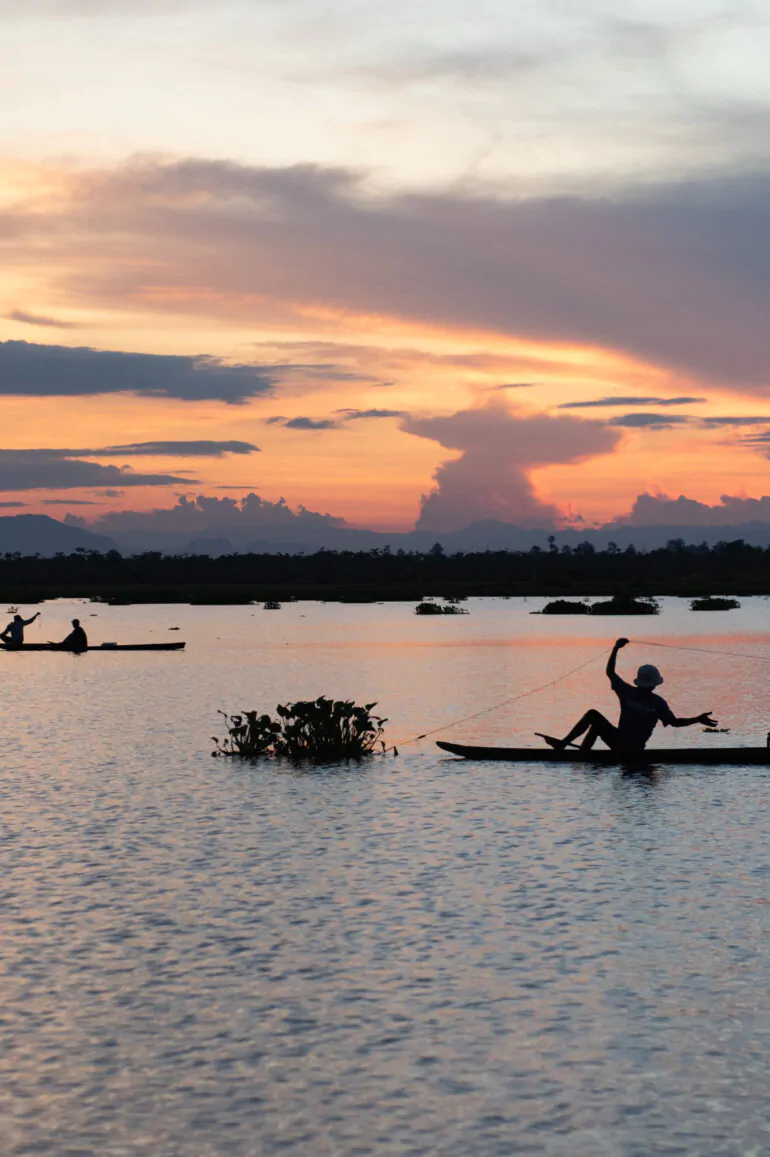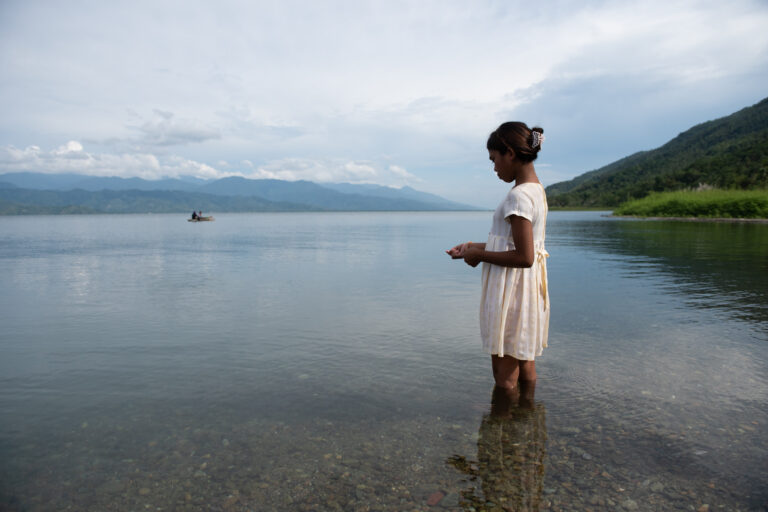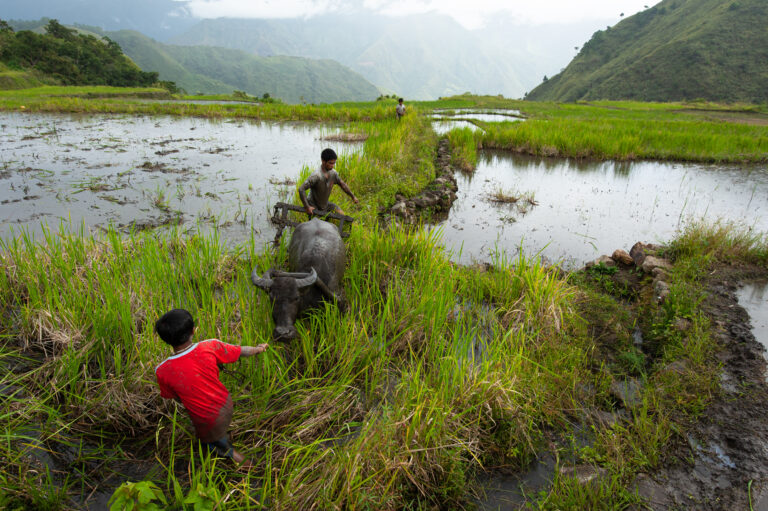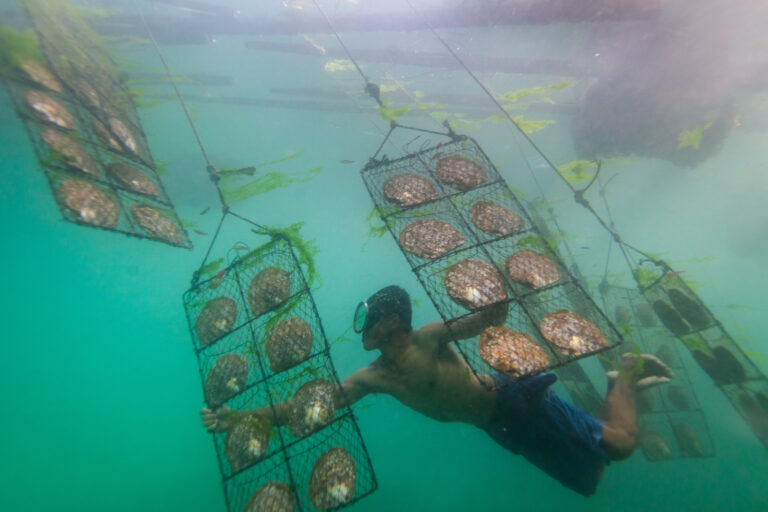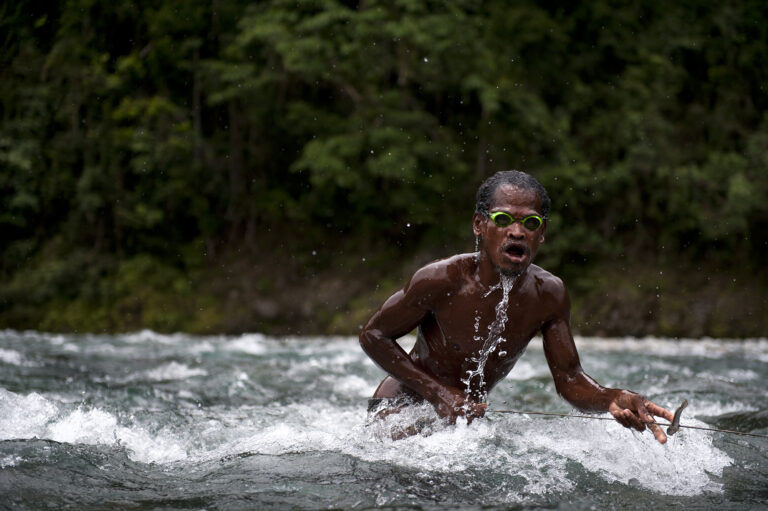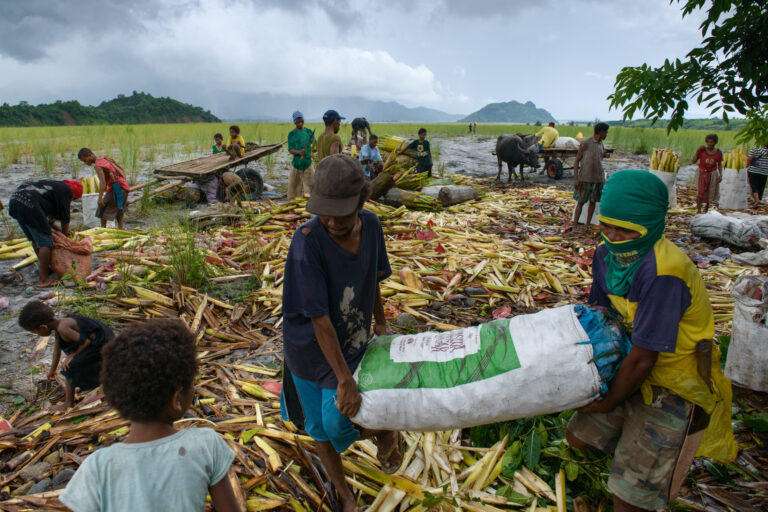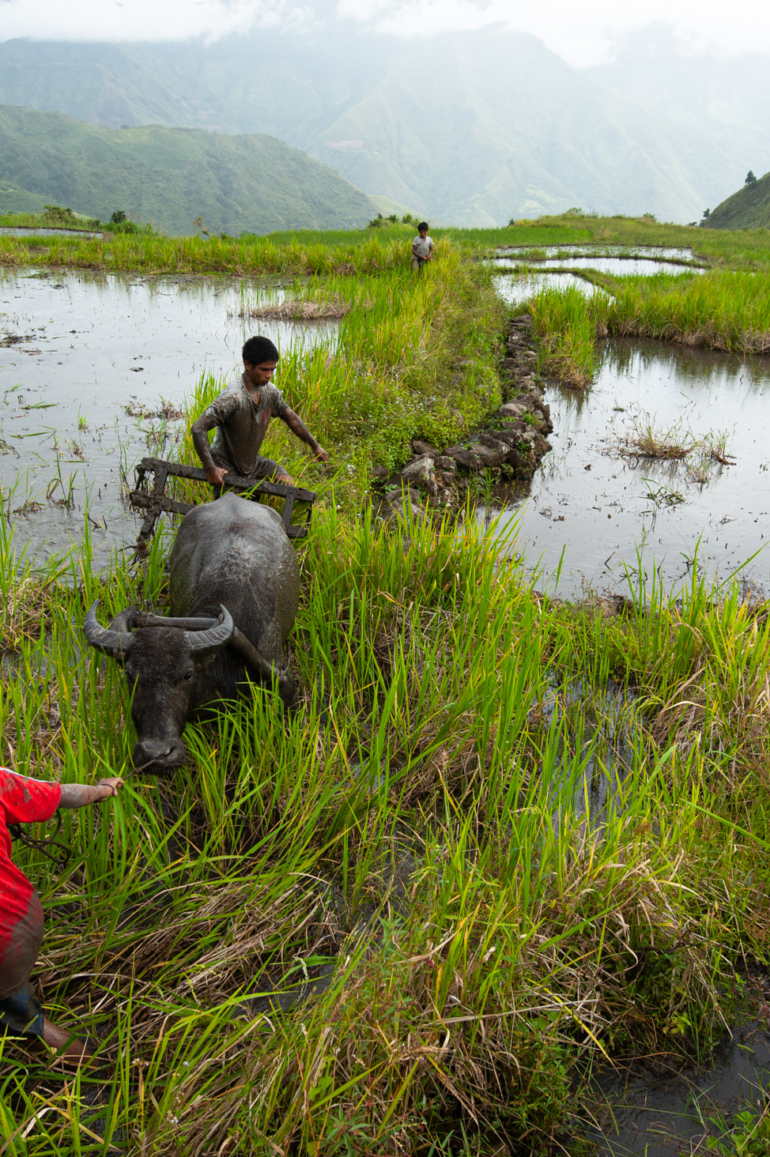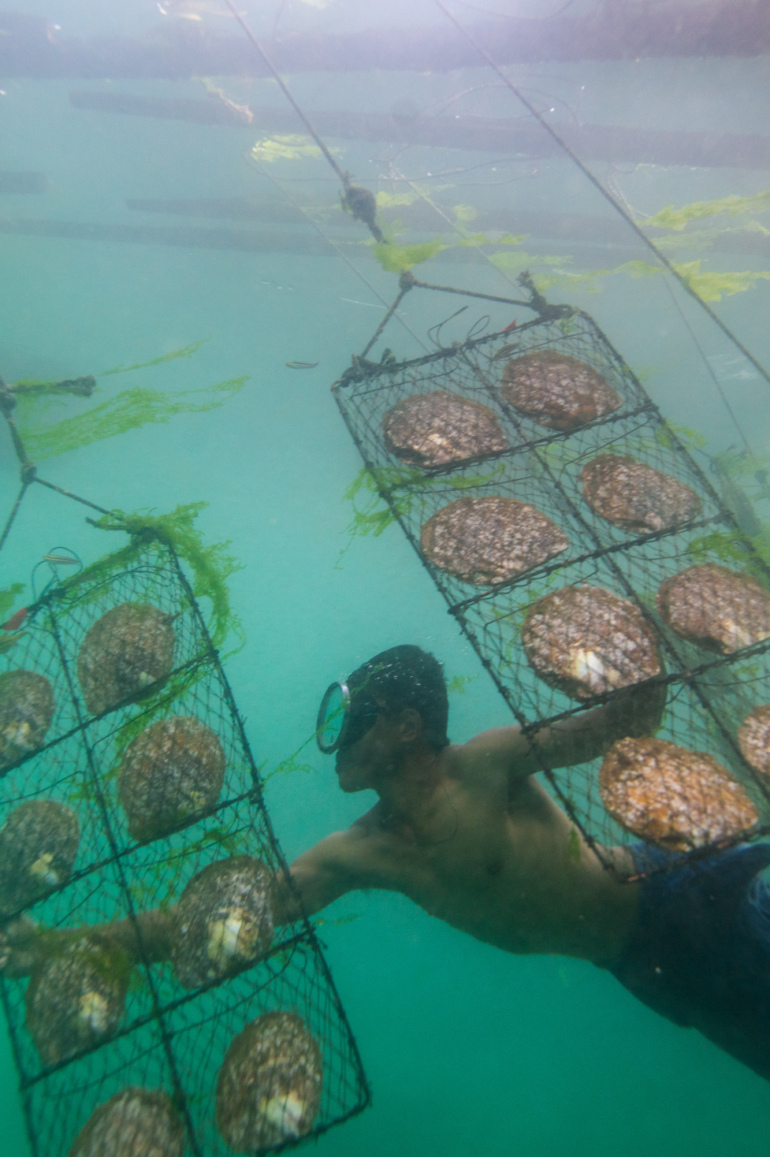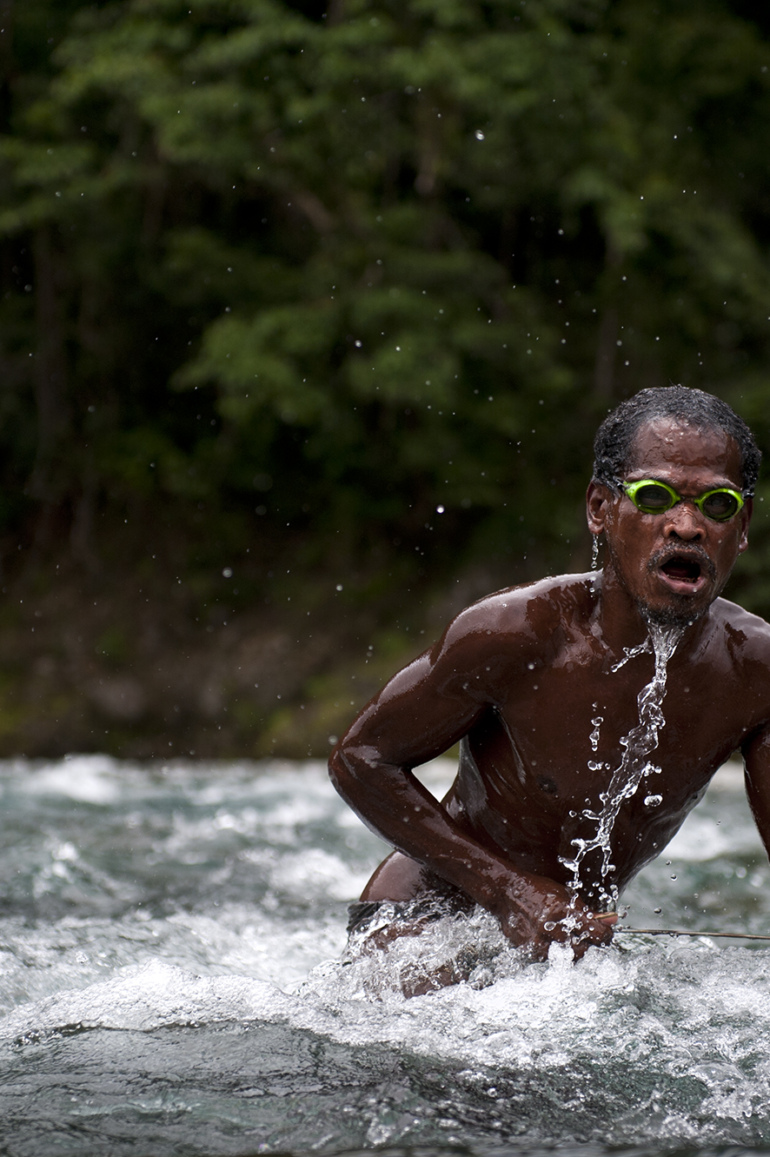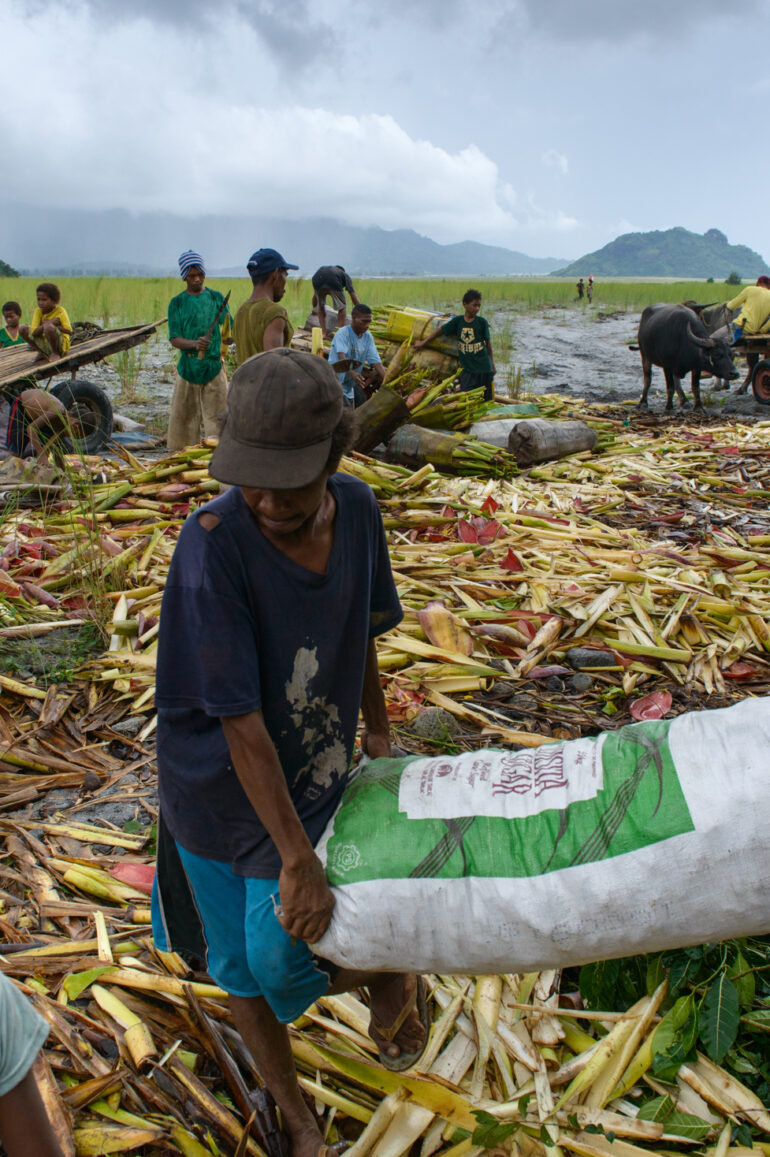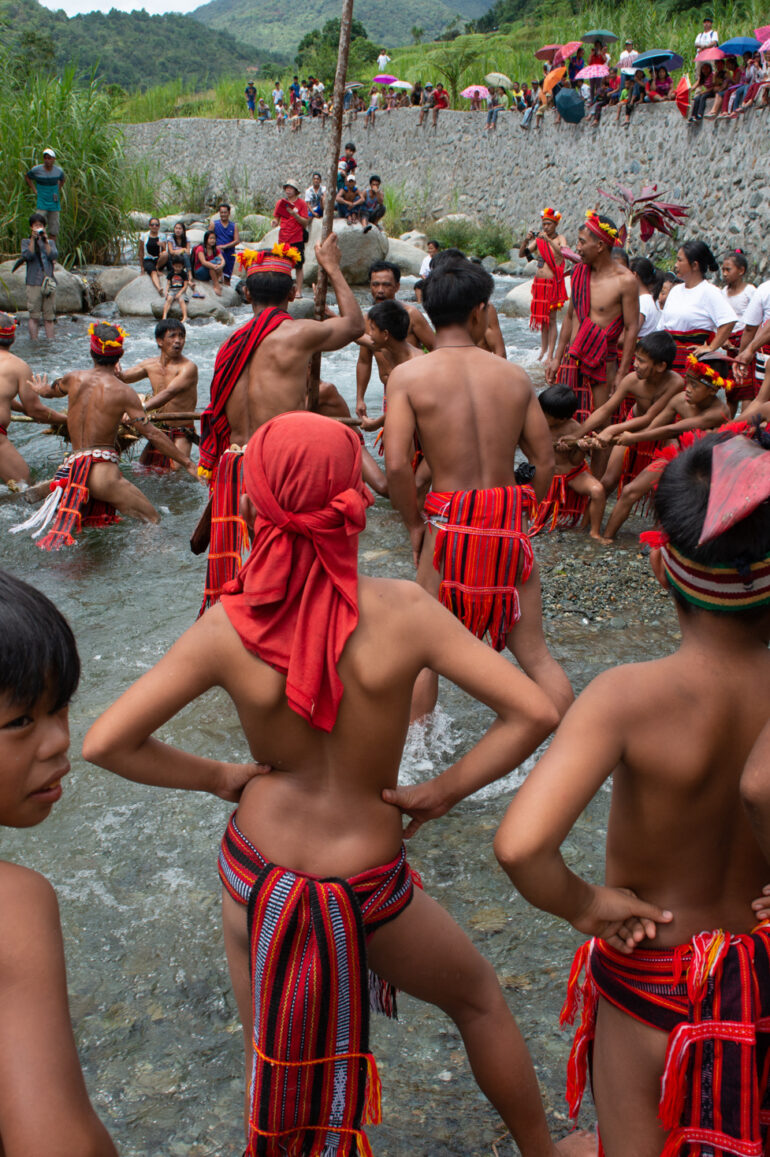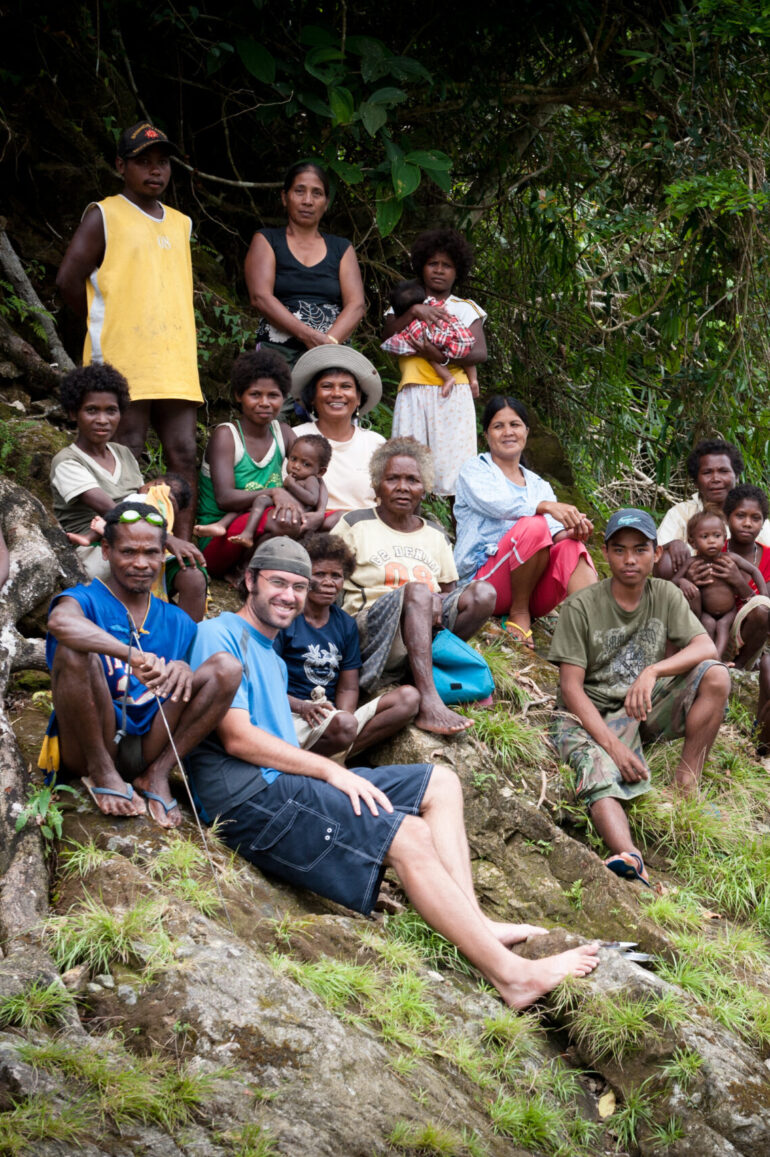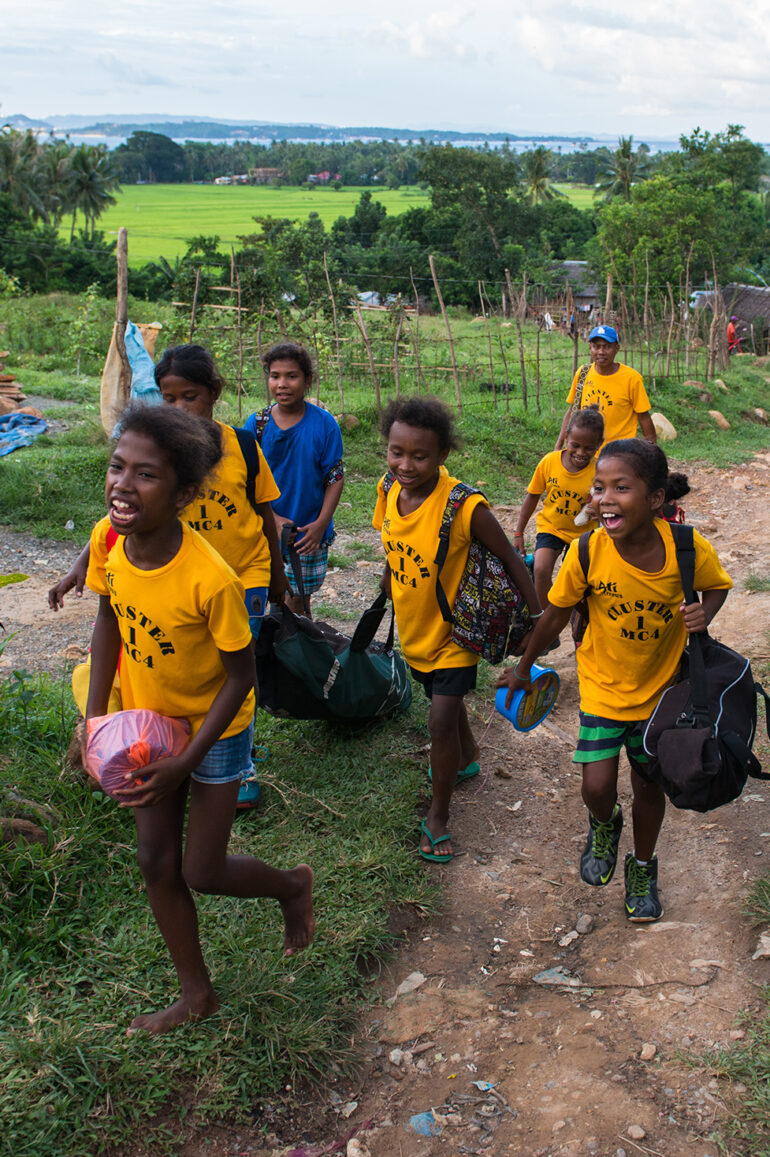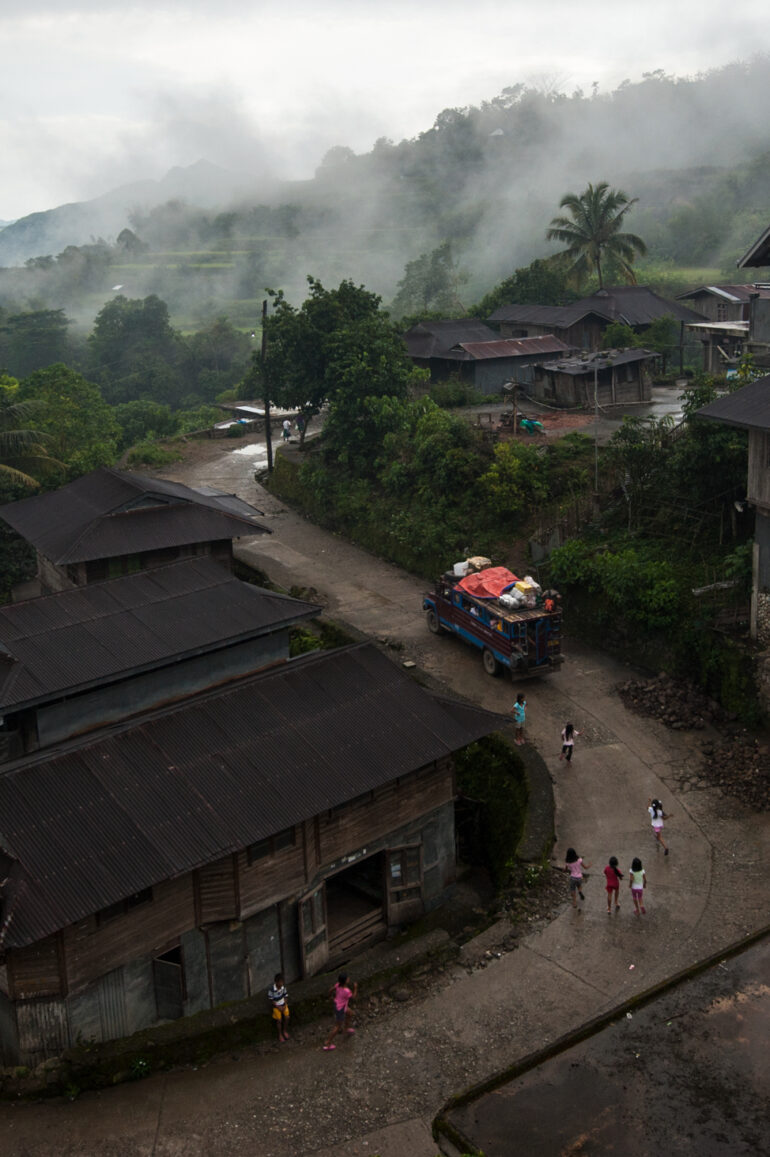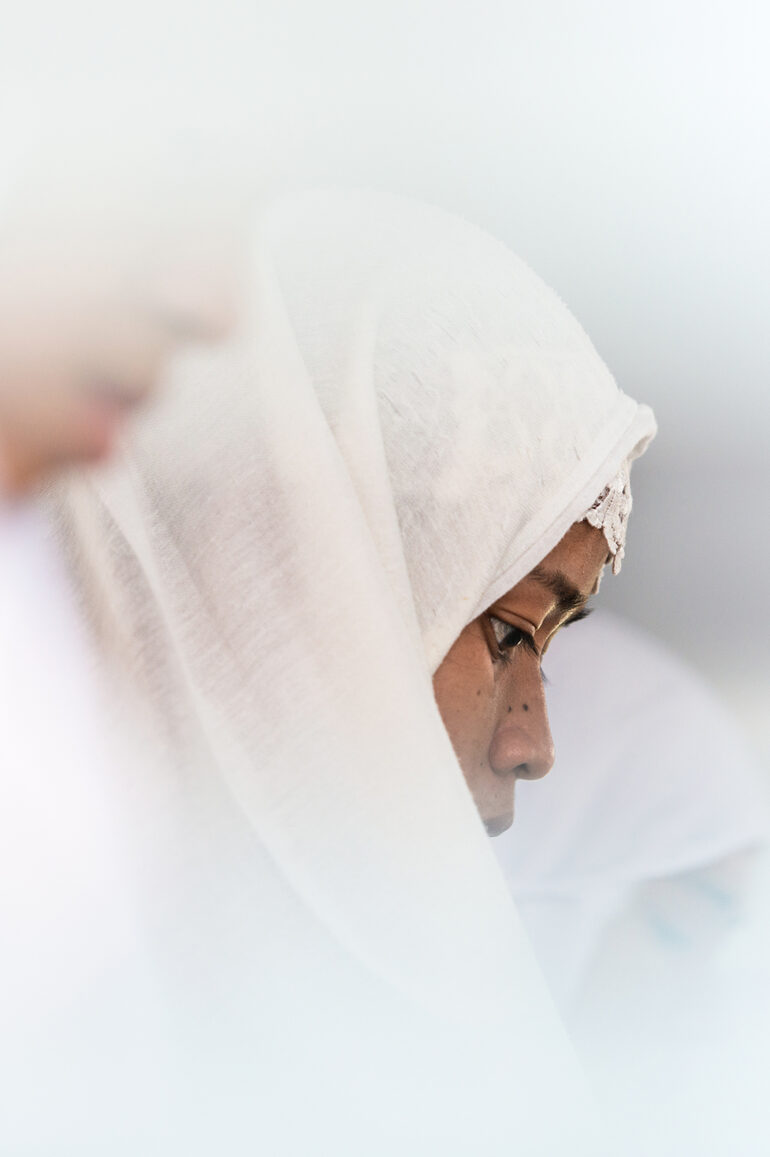About
Words by Nicola Sebastian
1. Bad weather, a bad kidney, and a worldwide plague…A beginning
1. Bad weather, a bad kidney, and a worldwide plague…A beginning
Do you believe in signs? Do you think you could discern a rhythm and shape to the world if you paid enough attention? Or perhaps, it is attention itself that needs attending to, for the ways in which we have perceived the world are also the ways in which we have shaped it.
When Jacob Maentz asked me to help him with this book, the plan was to travel to a few of the Indigenous communities that he has photographed throughout the past decade. Along the way, we would indulge ourselves in a meandering conversation about his practice as a photographer, what he’s learned from these communities, and the challenges the Indigenous face when it comes to land, life, and liberty.
Our first trip was supposed to be the Agta of Maconacon, Isabela, the first community he ever visited with a camera. Protected by the Sierra Madre, their village is only accessible by small plane. Jacob brought with him a box of sponsored snorkeling gear, a special request from the Agta he was friendly with. We took a sleeper bus from Manila to Cauayan, Isabela, and got no further. Dark clouds had gathered over the mountains, grounding our 12-seater Cessna.
Among the handful of stranded passengers was an Agta couple that Jacob knew from the village we were supposed to visit. He said hello, and they told us that they had flown into town to see a doctor.
Jacob explained to me afterwards that the lack of road access to their area is both a blessing and a curse. Because the Sierra Madre isolates them from the rest of Luzon, the Agta of Isabela have been able to continue living semi-nomadically along the eastern coastline facing the Pacific Ocean—unlike most Negrito peoples, who have been forced to retreat into the mountain to avoid encroaching settlers. However, the mountain range also prevents their access to essential services like modern medicine.
In the end, the delay turned out to be good timing (for us, at least); a few hours later I was in the emergency room of a nearby hospital. I had to be confined for the next five days, thanks to a kidney infection.
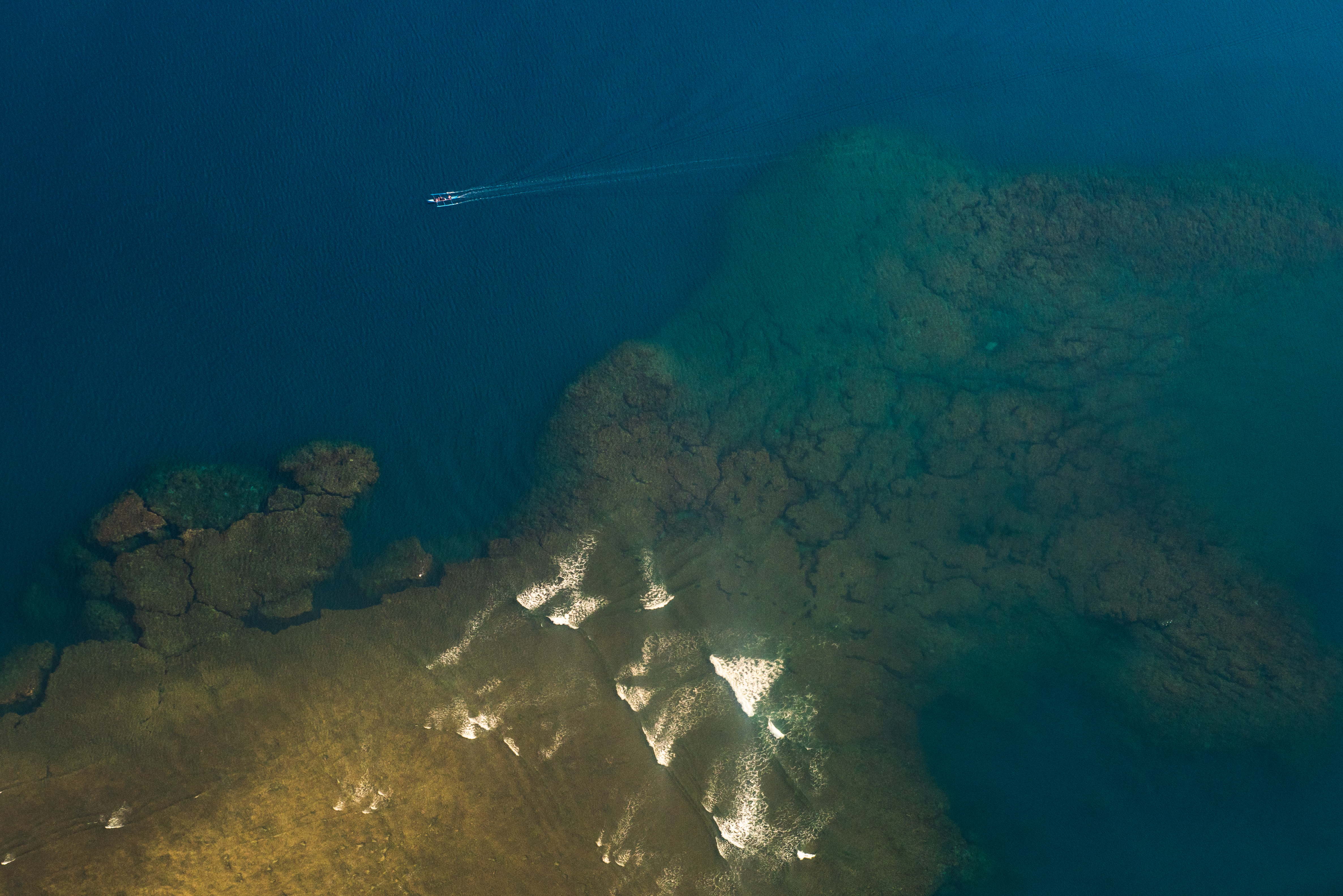
For our second trip, we decided to visit the Ata-Manobo tribe in the Agusan Marsh, one of the largest and most important bodies of water in the Philippines. From there, we would visit a Blaan community outside of Davao City, and speak with a Blaan teacher at a local public school, who is in charge of a section devoted exclusively to Lumad children.
At sunset, Jacob, his daughter Amaya, and I paddled around the floating Manobo village in an outrigger-less baroto. We peered into the schoolhouse nestled in bobbing piles of waterlilies, empty. We floated past drowned tree stumps standing like forgotten sentinels of a lost land. We watched a flock of birds skim across the mirror-like surface of the wetlands. When darkness fell, we ate freshly caught fish, charged our phones using a solar-powered battery, and lay down on our sleeping mats, listening to the creaks and sways of the floating municipal hall. The next morning, we woke up to messages saying that President Duterte had announced that the country would go on lockdown in two days. COVID-19 had officially become a global pandemic.
As city after city announced their own pandemic protocols, we signed out of the visitor’s log while the municipal workers eyed us fearfully. Public transportation was quickly shutting down, and people were in a rush to get home, or to wherever they could shelter in place. We took a tricycle and then a bus to Davao City, eating super-sweet lansones and mangosteens along the way to keep our immune systems up. We just made it onto the last flight to Cebu, where Jacob lives with his family. Another plane, an open-aired bus, and a tricycle got me to my home in La Union.
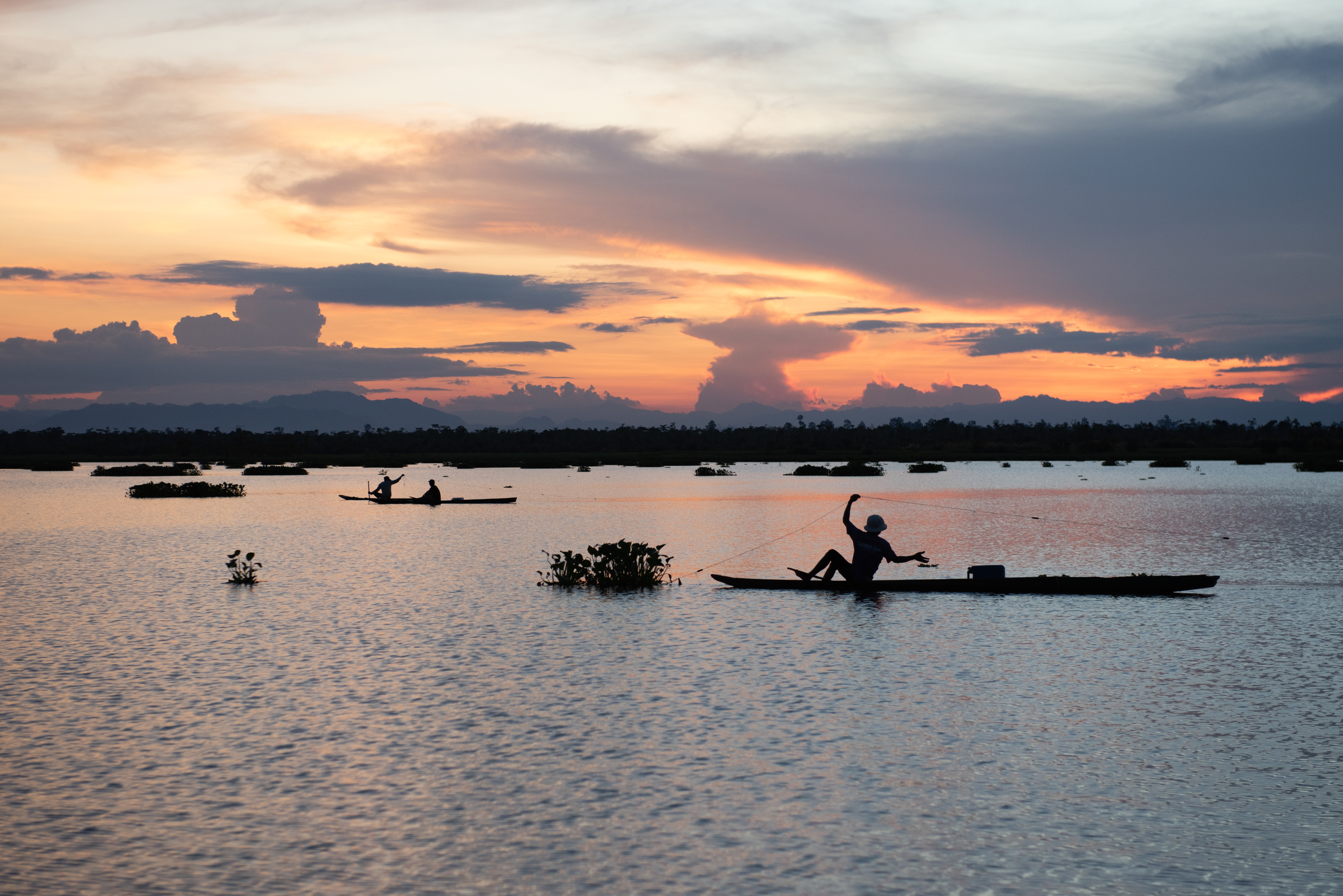
For the next few months, stillness reigned in streets and shopping malls; nothing but clouds and birds moved across the city skylines, which growing clearer by the day. Commuters had to stay at home, medical frontliners couldn’t go home, and everyone I knew was left reeling from the abrupt stop. The closure of the biggest news provider in the country, ABS-CBN, the swift passing of the Anti-Terror Law, and disinformation-fuelled political campaigns forced us to reckon with, the privilege that is also our blind ignorance, our fearful silence, or at worst, our rationalized rejection.
In turn, our editorial team had to ask ourselves: What kind of book was to be made, could be made, in this so-called “new normal”?
2. A note on Jacob…The book’s actual beginning
2. A note on Jacob…The book’s actual beginning
Jacob first arrived in the Philippines as a Peace Corps volunteer in 2003 to survey the marine life of Palawan and teach environmental education. Staying on after his service, he continued living in the country, doing photography and conservation work. In 2011, he visited an Agta community in Isabela (our first ill-fated journey was meant to retrace that experience). Although Jacob didn’t know any Agta, a biologist friend, Carmela Española, had done fieldwork in the area, and introduced him to some guides from the communities. He started a long-form blog, like many foreigners do, where he could process his experiences through stories and photographs.
One trip led to another, and soon enough he was devoting all of his free time to what was turning out to be a long-term project. Each community he visited was entirely different, with their own way of doing things, which meant that Jacob had to meet them on their terms every time. Some, like the Hanunoo-Mangyan in Oriental Mindoro, required him to get formal permission from the National Commission of Indigenous Peoples (NCIP) before he could set foot in their community. Others, the Buhid-Mangyan, another Mangyan group of Oriental Mindoro, asked instead that he explain his project to the entire community. They gathered the next day to hear him out, and, after discussing amongst themselves, told him that he could stay and take photos. “They also invited me to attend a rare ritual later in the week that I stayed for,” remembers Jacob.
Inevitably he made mistakes, and sometimes never got access to a community at all. He recounts one particular visit to a Manobo community in Bukidnon during the early days of the project. “We hiked all day long up the mountain with our guide, Jeffery, who was from the community but had also lived and studied in Davao.” He continues: “When we reached the community at dusk time the community was very lively and I began shooting images with the permission of Jeffery. It wasn’t long before the Datu wanted to speak with me. He asked our purpose, so we explained it to him, and eventually he gave us permission. It was a mistake to not go to him first when we entered, but also a learning experience.”
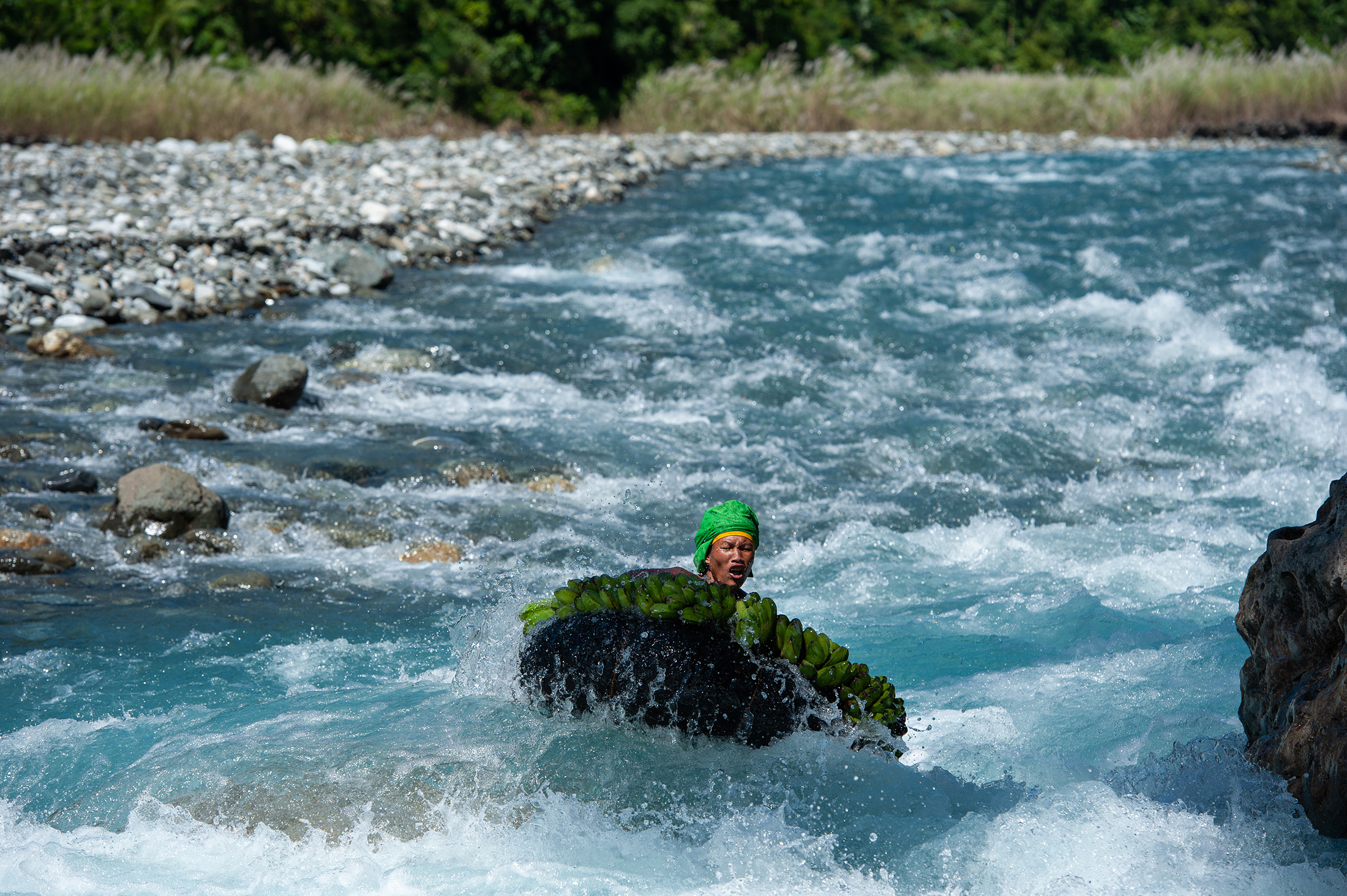
For a white American just over six foot tall, Jacob has a surprisingly quiet presence. During my stay at the hospital in Isabela, he visited me every day, and somehow didn’t make the small hospital room feel crowded. Instead of looming, he’d fold himself into the smallest space possible, always moving gently, whether he was adjusting the room temperature or offering me a banana from the many bags of fruit he bought to help me get my health back.
This sense of space, expansive, yet unimposing, is palpable even in his photographs—not just in the wide open spaces of the homelands he has been privileged to visit and come to love; but in the photographic gaze itself. Wide open, Jacob’s approach gives the people in his images the space to be—and to be seen—as they choose. He’s the type of photographer who, as the subject sharpens into focus, fades into the background.
“It’s very important for people to feel comfortable around me, which I believe establishes the first layer of trust,” offers Jacob. “The second layer of trust comes when the community understands my intention and gives me permission to be there.”
“The ultimate layer of trust is when your work shows your intention and resonates with other communities, and I’m invited in as a guest by them.” This last layer happened more and more as his blog grew in popularity. Jacob recounts one such time: “Sheena, the daughter of the late Mansaka Datu Onlos, had seen my photos from other communities. She invited me to visit her community in Compostela Valley to help bring more attention and awareness about her culture.” The permission granted him by Indigenous Filipinos, in other words, has been a process, organic and never automatic, one that has grown alongside his relationships.
Ruel Bimuyag, an Ifugao and a photographer, has worked with Jacob for many years. He is a man of many talents, touring the world with an orchestra comprised of traditional Ifugao musicians. He also sidelines as a producer and a field guide for foreigner photographers who come to the Cordillera. “Other photographers come here with expectations,” he shares with me over Zoom from Kalinga, where he sheltered with his wife, Kalinga weaver and artist Irene Bawer, and their three sons during the pandemic. “They come here with their camera on their neck. They don’t know how to eat with the people they visit.”
“I remember working with a famous photographer, and at some point, I realized that what makes these guys famous is that they only take the images according to the aesthetics they are trained to. Even before they get there, they’ve already created the story according to what they’ve read. And then they do so much work in the image just to prove that they were there. The image becomes a proof of purchase.”
“With Jacob,” he continues, “it’s different. He’s very open. I share a lot of information that only he can understand because he has a higher sensibility than other photographers. He dignifies the people he photographs around the Philippines; the land they own; what they are fighting for. I think it’s because he’s married to the country.” He means this quite literally: Jacob’s wife is Filipina, a teacher, and they live with their two kids in Cebu.
In other words, what separates Jacob’s work from that of many other foreign photographers is that he stayed. It’s that simple, and perhaps, knowing Jacob, unsurprisingly unassuming. He has chosen the Philippines. To be here, for nearly half of his life, thus far, and make this land his home. I asked him what compelled him to come to stay, to keep returning to these faraway places and their people. He told me a story about an eagle feather.
When he moved to Colorado for university, Jacob became active with a campus ministry group for students searching for belonging in a new place; for a sense of home. Often, the group did wilderness retreats in the American Midwest. In South Dakota, they spent a week with the Lakota, who invited them to take part in an Inipi, a purification ceremony performed in a sweat lodge. Their skin, eyes, and noses stung with the hot steam and the smell of burning sage. For the next few days, the Lakota performed a Sun Dance, a most sacred ritual, which they allowed to be partially witnessed by their young guests. One of the dancers offered Jacob an eagle feather, which he accepted as the entire community looked on.
Years later he would learn that the gifting of a feather was a great honor—most likely, the dancer had been inspired to do so by a vision, brought about through an act of personal sacrifice. Even though Jacob did not know this, then, somehow he carried it with him—the memory of a feather placed in his hands, weighted with a meaning he could not see, but could sense, hold space for, and hold on to–long after he had gone home and graduated with a degree in wildlife and conservation biology. He would come across eagle or hawk feathers on the ground even in Palawan, during his time as a Peace Corps volunteer, when he encountered one of the earliest settlers of the Philippine archipelago, the Tagbanwa. “I believe [they] are signs connecting me back to the Lakota, The Creator, and the land of the Great Plains,” he tells me.
Jacob is an outsider, but I think he is able to see, because he is able to listen. More importantly, the Indigenous communities feel seen when he shows them their photographs, and perhaps they feel heard, too. His presence calls in presence, and their permission gives him permission, making space for the unknowable mystery that is another person, one who is the same and yet also different. More than individual moments, what his photographs truly document is a cumulative effect: they show what one sees when one keeps looking. When one returns again, and again, to deepen one’s gaze, even if that requires one to deconstruct it entirely in order to perceive anew.
“I’ve realized over time that I’m actually more interested in learning about people and places than the photography itself.” Jacob told me this the night before I flew home from Cebu, just two days before the national lockdown began. We were in a café, looking through the photographs gathered in this book, his two kids sipping on blended drinks, as he explained to me patiently the context behind each and every image. “Early on it was probably the opposite, so I see an evolution in myself. As you learn and grow personally, your perspective also changes as does your bias and approach. That’s one of the most important reasons for being fully engaged in a project like this for years and years.”
“Slowing down, listening, and being fully present actually sets the stage for more powerful and meaningful photographs that give more space to the people in the frames. For me, when I’m better informed, my awareness increases, creativity raises, and my excitement leads to better storytelling.”
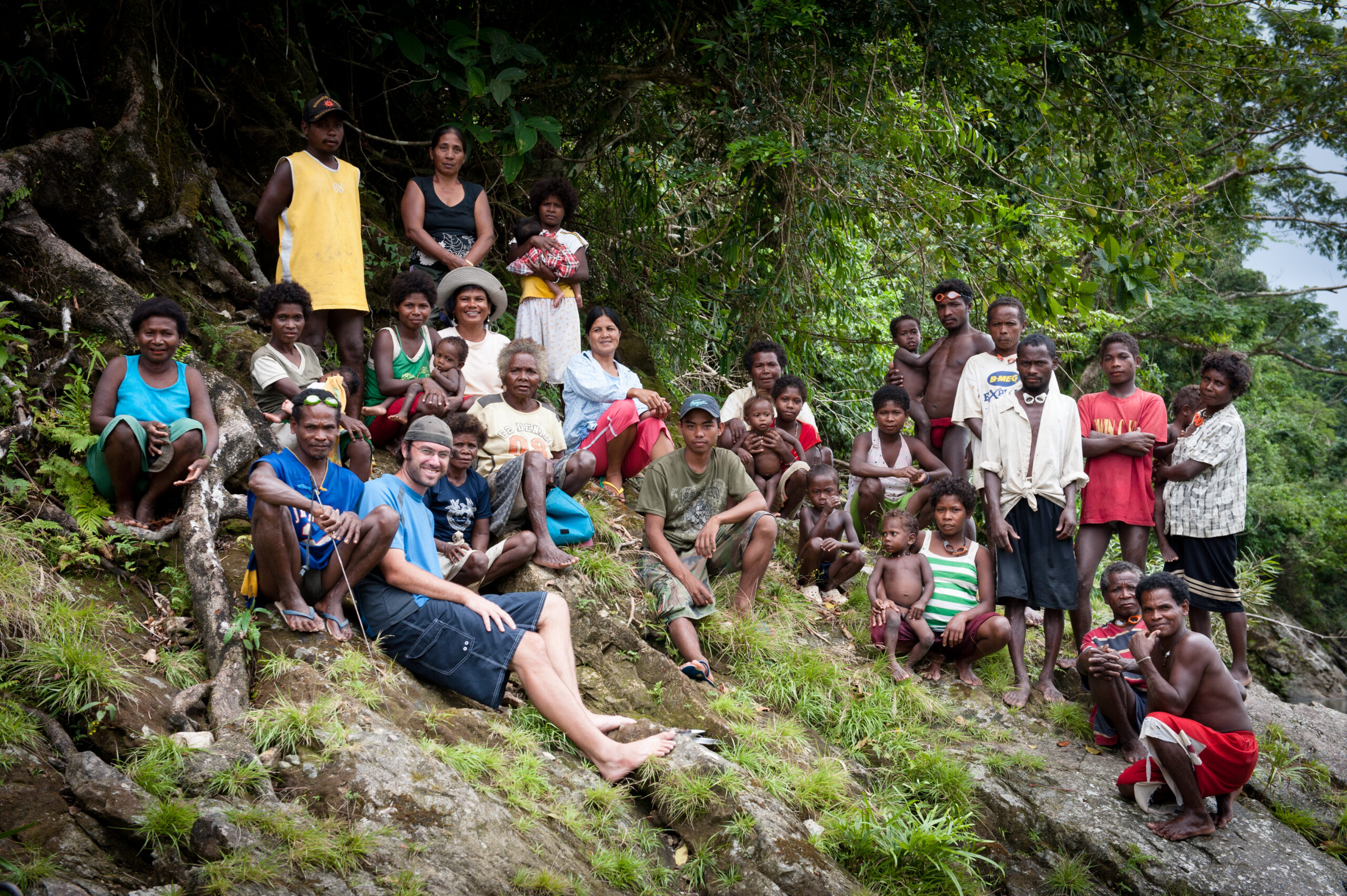
3. The inward migration…A better beginning
3. The inward migration…A better beginning
One thing became clear to our team: one essay, however extensive, couldn’t possibly provide an overview of Indigeneity in the Philippines—especially one written by someone who is neither Indigenous nor even a scholar of Indigeneity. Not only was this approach grossly insufficient, it was an outright disservice to the Indigenous people who have shared their stories and friendship with Jacob—more than 40 communities, all in all, most of whom Jacob has kept in touch with, returning to over the years.
As everything we knew fell apart, and everyone we loved struggled to recenter themselves, the people who worked on this book decided to listen. In a sense, this book has followed in Jacob’s footsteps, and our team has done our best to listen to the signs as we encountered them.
Our perspectives are limited to the world we know—more importantly, the way we know it—so we turned to the Indigenous communities themselves and asked them to lead the way into all that we did not know because it has been intentionally forgotten, made invisible. We asked the Indigenous communities themselves to shape the writing, in terms of content as well as the form. We went out—via hyperspace—in search of Indigenous leaders, youth, academics, and allies to speak to, a roster drawn from the combined resources of our team, in particular the combined networks of Jacob’s, our academic consultant, Neen Sapalo, an anthropologist whose work focuses on Indigenous communities, writer and director Gabriel Malvar, and of our research manager, Saree Gloria, an artist who has worked as production manager on various art books about Mindanao–all of whom contributed their own thoughtful writing to this collection. Some of the people we spoke to were Indigenous; others were advocates for the Indigenous communities they lived and worked with for years. We spent nearly 100 hours in conversation all in all, asking questions, but mostly just listening to experiences wholly different from ours, even if they were occurring in our own country, sometimes even in the same islands we call home.
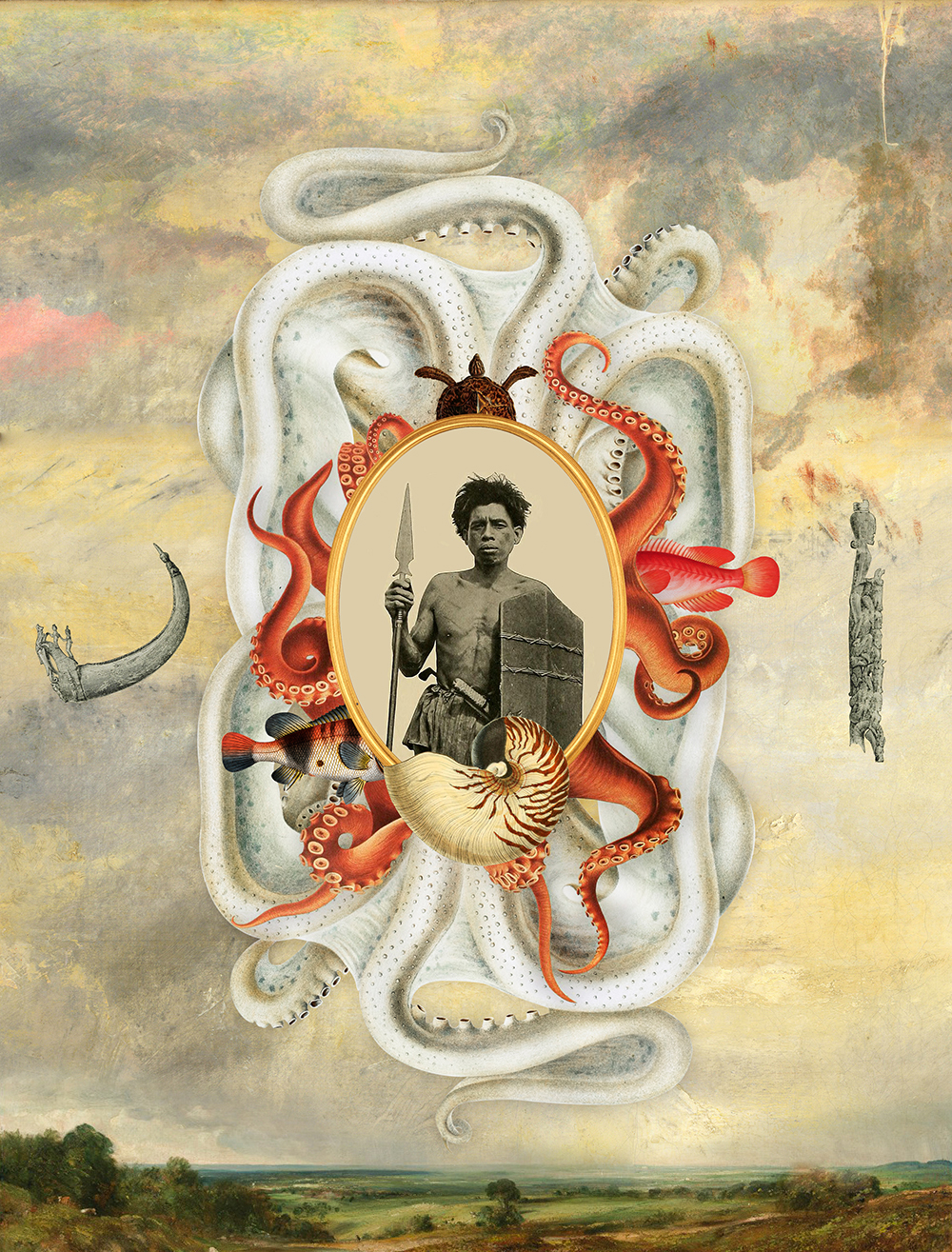
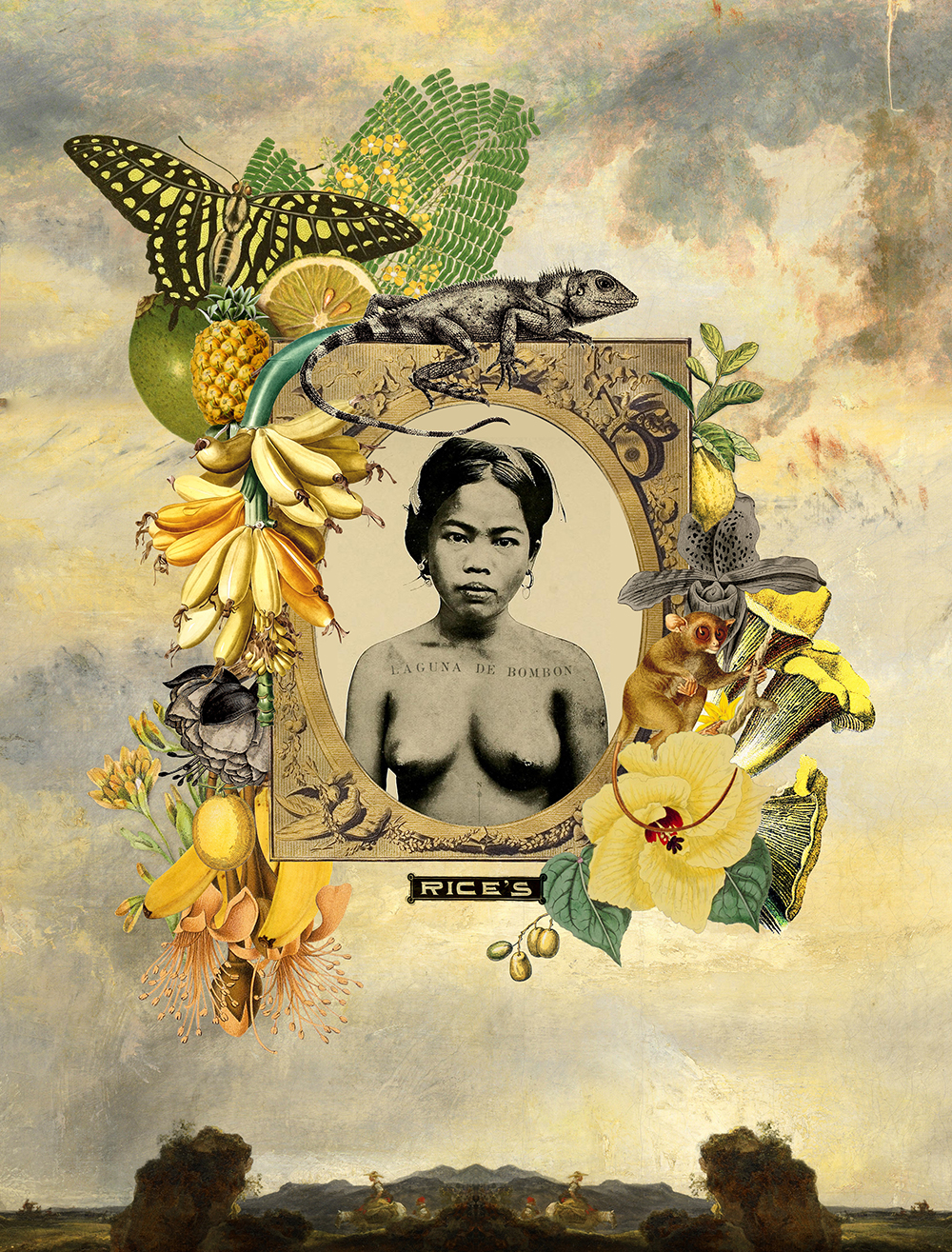
We absorbed, catalogued, and synthesized what they told us, deepened and clarified by our own forays into historical texts, government policy, and academic journals. The result was an exhaustive mind map outlining an archive far more extensive than we’ll ever know what to do with. Our team did our best to find, throughout the Indigenous stories and knowledge that were so generously shared with us, if not a bigger picture, then a connective, emotional thread, by which non-Indigenous people could follow our journey towards greater understanding and empathy with the various Indigenous communities we came into contact with.
The result is the humble handful of texts that made it into this book, shaped and clarified with careful edits from writer and editor Anna Canlas, who also contributed an incisive piece on agriculture. Several Indigenous colleagues also offered their feedback in the final edit of the writing, which would not exist without their blessing. Comprised of primary and secondary sources, the writing here attempts to trace what we were privileged enough to experience during those intensive months spent in deep dialogue: the underground roots and rivers of a growing, gathering watershed movement that is Indigenous.

4. A weaver and her builder…Yet another beginning
4. A weaver and her builder…Yet another beginning
Spared from the worst typhoons thanks to the Cordillera, La Union’s characteristic dryness becomes unbearable in the summer months. Dusty, unrelenting, static, the ocean is still, the air even more so, and there’s not a cloud in the sky under which to hide. With some friends and a family of artists I sought respite from the heat in Baguio, summer capital to Manila tourists, former hill station to US military personnel, and a sanctuary for Indigenous art and community, although a precarious one thanks to government attempts to red-tag and break up Indigenous organizations. Here, two years after first speaking, at the supposed end of the pandemic, I finally got to meet Ruel.
After buying too many books at the Mount Cloud bookstore, we arrived an hour late at Ili-Likha, an artist village put up by the Baguio-based artist and writer Kidlat Tahimik. Having only met Ruel on Zoom, I wasn’t entirely sure I was speaking to the right person when I stammered out an apology at a guy sitting patiently at Leandro’s Bistro. Ruel smiled, his teeth tinted with betel nut, and told me there was nothing to apologize for.
His eight-year-old son was with him, Hugu, whose hair has never been cut in accordance with Ifugao custom. Over dinner, Hugu regaled us with stories about the seven eagles that live on his mother’s ancestral land in Kalinga, before stealing away from the table to show our friends’ kid the proper way to do a front flip. Ruel invited us to come over to their house afterwards, so Irene could show us the weaves she was currently working on.
Ruel comes from a family of Ifugao woodcarvers; their workshop fronts the highway just outside their house, filled with the smell of wood shavings and varnish, chairs and statues carved by hand in the Ifugao style. We took off our shoes, stepped over a wooden threshold, and entered.
Their home seems to be carved out of a single piece of wood. Probably because Ruel designed and built everything himself, from the tree-trunk kitchen table to the wall-to-wall bookshelves. But the house is, in fact, a collection of houses–traditional Ifugao structures that Ruel relocated here and restored in his spare time. It’s their first time to be back since the beginning of the lockdown, Ruel says, apologizing for the weak spots in the floor, the thick wooden planks still gleaming from several generations of footsteps.
Irene tells us to make ourselves at home as she stirs a pot of bulalo soup, coiled spines of pythons hanging amidst the pots and pans. Her arms are adorned with hand-poked sleeves in the pattern of a snake’s belly, but her small smile is a welcome as warm as the smell of simmering beef bones and newly cooked rice, the spice of the homegrown and homemade chili sauce, and the chatter of Ruel and Irene’s relatives, drinking beer and nibbling on fried bones. Their home seeps into our bones. We dig into our second dinner.
Irene is descended from a community of master weavers in Mabilong, Kalinga. She learned to weave as a child, alongside her sisters, from her mother and grandmother in their family home. They still weave as a community. Coming from different Indigenous groups, Irene and Ruel might have never met had they not been attending university at the same time in Baguio, which is where most Cordillera families send their children to school, if they are able.
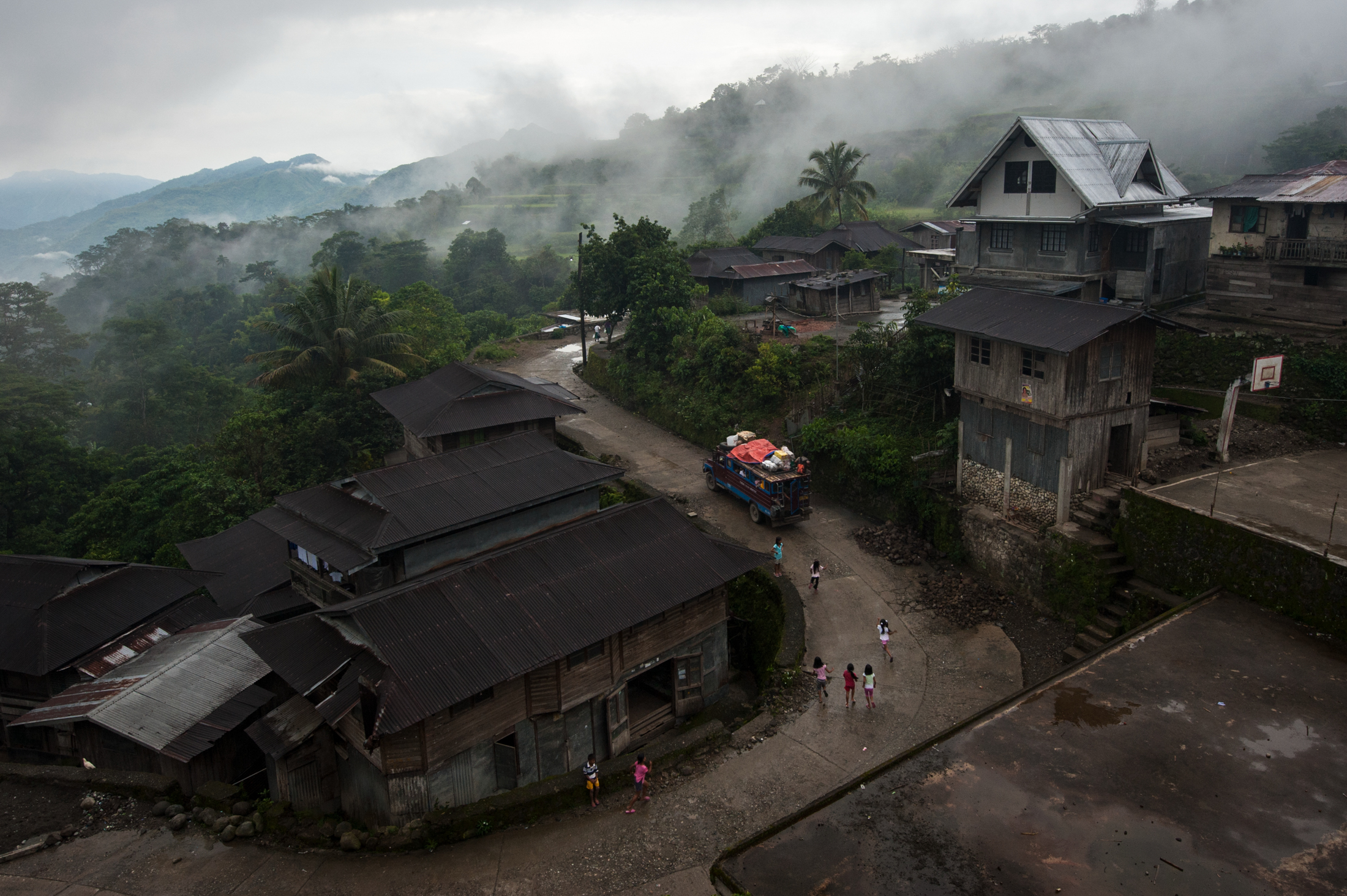
After dinner, Irene brings out some rolls of cloth. “For your eyes, only,” she says. Her clients hadn’t yet seen their finished commissions. We gather around as she unfurls her work. I had been expecting the earthy reds and blacks customary to Kalinga. But these are aglow in blues, greens, neons. We touch our fingers to the patterned textures of brilliant thread, trace the symmetry of the shapes we don’t yet understand.
“There’s conflict over whether weaving is a craft or an artform,” says Ruel. “You see, these colors are not the colors seen anywhere in Kalinga. But when we traveled to the ocean—to visit your area in La Union, actually!—we saw such incredible colors. These patterns are inspired by the sea, not the mountains. We had to go around the markets looking for thread in these colors, because you can’t find it anywhere in Kalinga.” Though she works in various dimensions, Ruel adds that she still prefers a particular size of cloth, perfect for wrapping around one’s waist. These textiles are craft and art, both: an expression of the inner, dream world of Irene and her family that can be used as a skirt or blanket.
Before the pandemic, Irene and Ruel traveled to bring her community’s creations to art galleries and cultural conventions around the world. Ruel supports Irene in everything from helping her research ideas to communicating her art practice. Not everyone is so accepting of her non-traditional approach to weaving, “Outsiders like [the academe] often want us to stay pure. They want to preserve. But [ours] would end up a dying culture. We are stuck in this purist state where there’s less creativity, less innovation, so we’re trying to change that. Our manifesto is that it should not be dying. How? Not by changing, but reimagining. [Irene] has seen so much through her art, and she brings it all back to her community.”
“I dream to stay connected to my community,” Irene says this quietly to Andi, our artist friend visiting from Canada. She explains that, in her dreams, the colors and shapes of her experience become part of her weaving. Everything, from the number of petals on a flower to the color pattern laid out on the warp, has meaning. After she’s finished with a piece she shows it to the elders, and they begin to share memories, as if the patterns themselves bring half-forgotten knowledge back to the surface. They see the colors and the shapes created by the weavers, and their own stories start to flow.
Ruel and Irene’s life together, their creative partnership, proves that tradition is a living thing, growing and adapting with its people. In a way their shared practice functions like a bridge, connecting their communities with other communities, whether Filipino or otherwise.
It’s getting late. Too soon, it’s time to drive back to La Union. As we say our goodbyes, Ruel invites us to visit them in Kalinga. Perhaps for Hugu’s kolot, when his hair will be cut in a two-day rite of passage that is also a blessing of the man he will one day become.
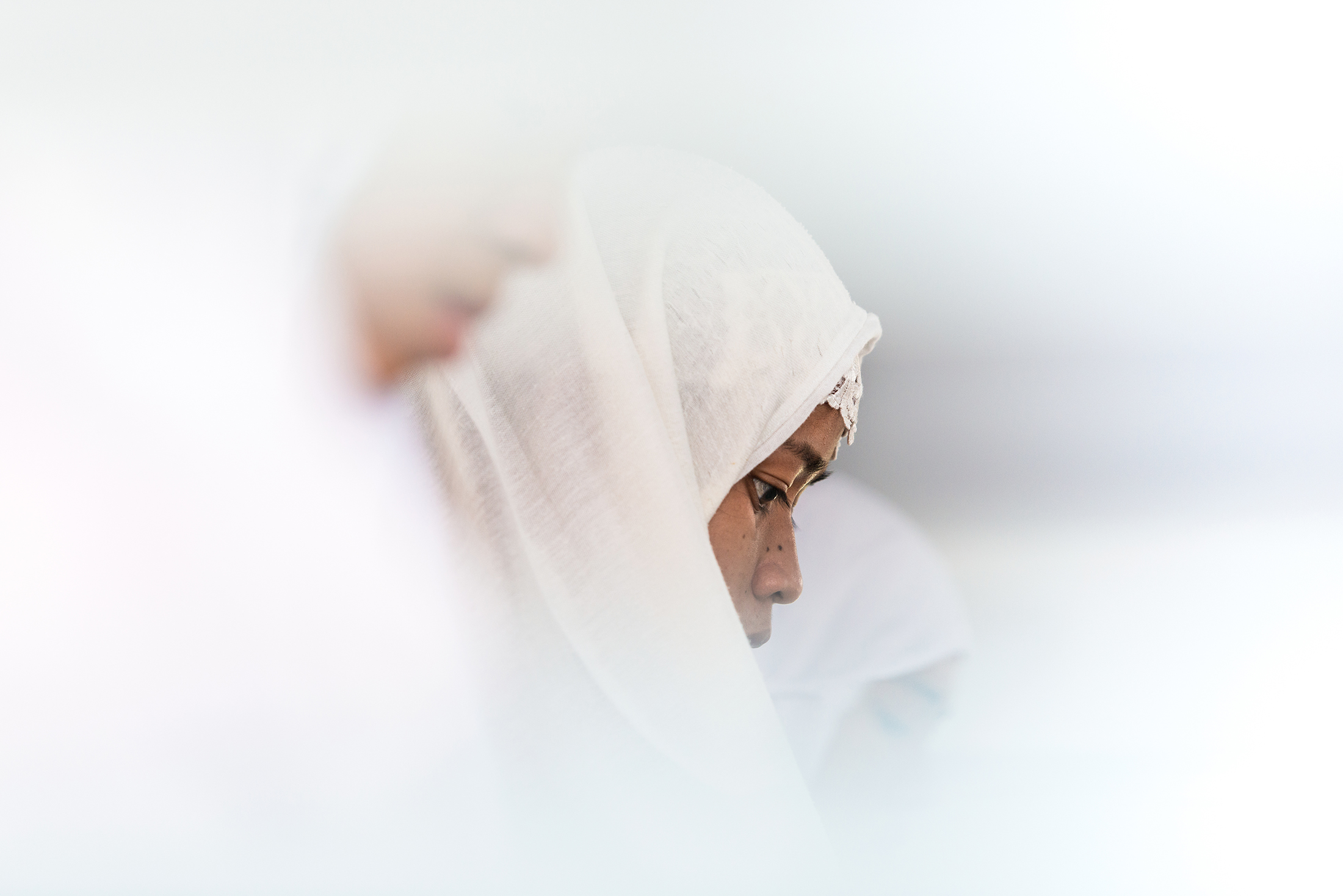
5. We are the watershed…The end is also the beginning
5. We are the watershed…The end is also the beginning
During the lockdown, I found myself returning again and again to that afternoon on the marsh, Jacob’s daughter Amaya paddling us around, the baroto sitting a little too deep in the water, sharpening the already acute feeling of being below sea level. The stumps of trees overgrown with plants, a maroon space for smaller kinds of life. The birds in flight, moving through the air as one, compensating for the stillness of the water with interweaving waves of their own. They knew just what to do, they knew exactly where they were, and watching them as we paddled silently “home” to the floating municipal hall, I almost felt as if I knew, too.
Every year, Amihan, the northeastern monsoon, floods the Agusan Marsh. The wetlands are a basin that collects all the spillover from the surrounding lands, and the rains fill the wetlands with fish that get trapped as the water subsides. The Ata-Manobo live here because of the flooding. Although fresh water is a problem, fresh food is not–a choice they have made and encultured for centuries. I could almost tune into the rhythm and shape of the land, the melody that the life here makes with its movements. Alas, I could not stay for long enough.
In making this book, I learned that most people who resist do so because they have no choice. They are fighting for their life, their freedom, the futures and wellbeing of their children. Resistance, seen this way, is a way of making space. It can be transformative, even generative.
I learned that Indigenous is a term born of struggle, of the yearning to be seen, recognized, and accepted in all of our diversity. Therefore, it is also a word rooted in solidarity. Indigenous is like the river systems that connect to form the watershed, sustaining the life of our ecosystem, connecting us to the land and to each other.
I learned that,
land is life—in all ways, even those beyond words;
remembering is a powerful political act, but also a healing one;
hope is a discipline, a practice born of struggle and stories, both;
and finally, solidarity is a watershed that can move mountains–or protect them, as the Cordillera peoples led by Macli-Ing Dulag did, winning the battle against the Chico Dam in the 1970s, and changing the course of history.
Our intention is to connect, rather than conclude. We could not hope to speak to every Indigenous community in the Philippines, nor address all of the issues they face. To stand in solidarity with them does not require totality, nor exhaustion. A genuine, empathic connection to one person, one story, one cause, can be enough to remind us of the whole that we always belong to, are responsible for.
Taking ten years to photograph and nearly three years to write and produce, the book you hold in your hands is an open invitation.
That night in Baguio was a moment of healing I didn’t know I needed. The feel of Irene’s weaving; the sound of Ruel’s words; their home. “The Indigeneous movement is still very vital, because this knowledge has to be kept alive–the history that gives us the wisdom of our previous generations’ experiences” he said. “We need our culture to remember. We need to remember to know who we are, today. We need to remember to stay connected to the land, to know how to take care of it.”
“When I think of myself, I am first an Ifugao,” he cupped his fingers to make a small circle. “Then I’m from the Cordillera” The circle expanded. “Then I am a Filipino.” Here Ruel opened his hands to include all of us seated. “Then I am a Southeast Asian.” He reached for even more space. “Then I am a human.” Over the table he made with his hands, he opened his arms as wide as he could.
“And finally I am from Earth,” he says at last, holding the whole world in his hands, now.
“Diversity doesn’t have to divide. You have to understand how all these identities work together, how the circles fit together. It’s all connected. When I go to these international conferences, they are full of people who think the same way, who know the real power of what we call diversity.”
In the end, beyond any genetic particularities, we are all Indigenous. We all call this land home. Indigeneity is an identity that is also an invitation–to go deeper–to look again, but this time with all of our senses–to heal our relationships with each other and ourselves by remembering our relationship to the land, and doing right by it. It is not the view of some alternative world, but of this one, right here; a living practice we might all participate in.
“To dwell is to see things as they are. And then you stay and fight for those things that you see for your community.” These are the words of Evangi Gray, a Navajo medicine woman still fighting for water rights for her people after thirty years. I heard them uttered not by her but by the Utah-based writer Terry Tempest Williams in a YouTube video of a keynote speech in 2019–a white woman wrestling with her people’s legacy as settlers and slavers. “It is a privilege,” Evangi helped Terry to remember.
If every man is an island, maybe solidarity is like the sea, or an archipelago, stringing our stories of suffering together, turning them into a strategy for collective transformation, a clamoring chorus of freedom that humanity can no longer ignore. The world is burning, the gyre is turning, and we have a chance to choose better, together.
Can this hurt and broken world birth yet again a new beginning? If you yearn for transformation, let our Indigenous Peoples lead the way. We hope some of these stories connect you to that planetary whole that we call Earth but know as Home. To the people who hold the line for you in the still-wild, as-yet-abundant places in these islands. To the songs sung by the land, and remembered by Indigenous ways of being and knowing; songs we can still learn to remember, ourselves, if we stop to listen, once more.

Homelands: The Book
This excerpt is part of Homelands, a photography book that unfolds Jacob Maentz’s close and continuing collaboration with various Indigenous and historically marginalized communities in the Philippines. The book’s 218 images are supported by 18 essays as writer Nicola Sebastian reflects on indigeneity and the diverse concerns of Indigenous communities: the importance of solidarity in the clash between self-interest and shared interests; the submerged history of political resistance; alternative education and traditional knowledge systems; food sovereignty; the idea of Indigenous peoples as environmental frontliners leading the race against irreversible ecological devastation; and the successes and challenges of reclaiming land recognition after centuries of colonization and modern development aggression.
